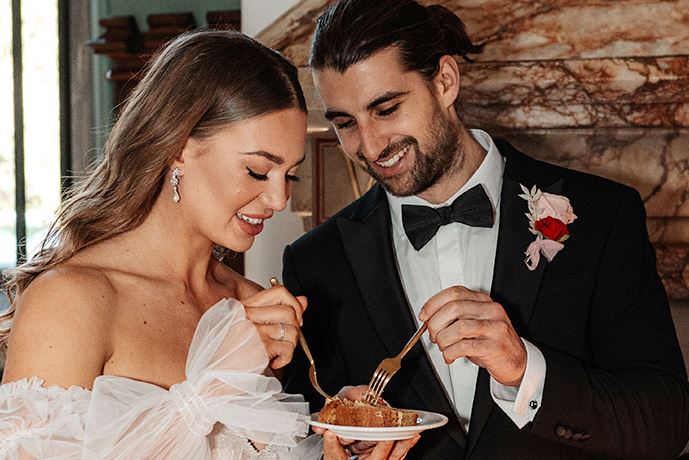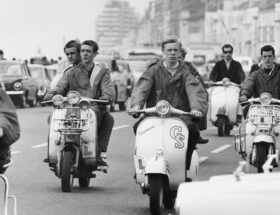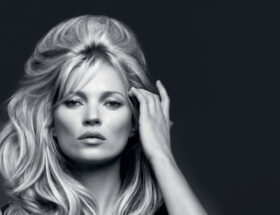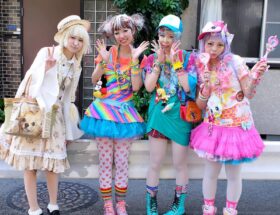The tuxedo: a garment synonymous with elegance, sophistication, and timeless style. From red-carpet galas to James Bond’s suave adventures, this iconic suit has cemented its place as a cornerstone of formalwear. But where did it come from, and how did it evolve into the cultural juggernaut it is today? This article dives deep into the history of the tuxedo, tracing its origins, exploring its transformations, and celebrating its enduring appeal. Expect a blend of historical intrigue, fashion milestones, and a few surprising twists along the way.
The Birth of the Tuxedo: A Tale of Rebellion and Refinement
In the late 19th century, formal menswear was rigid—think stiff tailcoats, starched shirts, and an air of aristocratic stuffiness. Enter the tuxedo, a garment born from a desire for comfort without sacrificing class. Its origin story is tied to a single night in 1886 at the Tuxedo Club in Tuxedo Park, New York, an exclusive retreat for America’s elite.
The legend goes that James Brown Potter, a wealthy American who had recently visited England, was inspired by a radical fashion choice he’d seen there: the Prince of Wales (later King Edward VII) wearing a tailless black jacket to dinner. Potter brought the idea back to the States and asked his tailor to recreate it. On October 10, 1886, he debuted the daring ensemble at the Tuxedo Club’s Autumn Ball, sparking both outrage and admiration. The “Tuxedo jacket” was born, and its name stuck.
- A break from tradition: Unlike the tailcoat, the tuxedo offered a shorter, more relaxed silhouette.
- Practical elegance: It retained a polished look with satin lapels and a black bow tie.
- Elite endorsement: The Tuxedo Club’s high-society members quickly adopted it, cementing its status.
Historians debate the exact details—some credit British innovation, others American audacity—but the result was undeniable: a new standard in eveningwear had arrived. According to the Metropolitan Museum of Art, this shift reflected broader societal changes, as industrial wealth began challenging old-world aristocracy.
The Early 20th Century: The Tuxedo Goes Mainstream
By the turn of the century, the tuxedo was no longer a quirky experiment—it was a fixture. As the Gilded Age gave way to the Roaring Twenties, its popularity soared. Men’s fashion magazines like Esquire (launched in 1933) championed the tuxedo as the epitome of modern masculinity, blending sharp tailoring with a hint of rebellion.
The Jazz Age and Hollywood Glamour
The 1920s and ‘30s saw the tuxedo strut onto the silver screen. Icons like Fred Astaire and Clark Gable donned it in films, pairing it with slicked-back hair and a devil-may-care attitude. A 1930s survey by the Clothing Manufacturers Association found that tuxedo sales had risen by 35% since 1920, driven by Hollywood’s influence and the rise of jazz clubs where sharp dressing was de rigueur.
Case in point: Astaire’s 1935 film Top Hat. His white-tie tuxedo dance scenes didn’t just showcase his moves—they made the garment a symbol of effortless cool. Designers took note, experimenting with wider lapels and double-breasted styles to keep the look fresh.
The War Years: Austerity Meets Adaptation
World War II brought fabric rationing and a pause in sartorial excess, but the tuxedo adapted. Simplified designs emerged—narrower lapels, fewer embellishments—yet it retained its aura. Post-war, the 1950s saw a resurgence as men embraced the “cocktail culture.” A 1956 issue of Gentlemen’s Quarterly reported that 60% of American men owned at least one tuxedo, a testament to its democratisation.
The Mid-Century Pivot: Reinvention and Revolution
The tuxedo’s journey through the 20th century wasn’t without turbulence. The 1960s and ‘70s challenged its dominance as youth culture embraced casual rebellion—think bell-bottoms and tie-dye over black tie. Yet, designers fought back with bold reinventions.
The Peacock Revolution
In the late ‘60s, the “Peacock Revolution” saw men’s fashion explode with colour and flair. The tuxedo wasn’t immune. Velvet jackets in burgundy or midnight blue, ruffled shirts, and oversized bow ties became the rage. Pierre Cardin’s 1970 collection featured a tuxedo with a Nehru collar—a nod to Eastern influences that shocked purists but thrilled trendsetters.
A standout example? David Bowie’s 1972 Ziggy Stardust persona. His flamboyant tuxedo-inspired suits, complete with metallic fabrics, blurred gender lines and redefined formalwear. Fashion historian Valerie Steele notes in her book Fashion and Eroticism that this era marked a “radical rethinking of masculinity,” with the tuxedo as a canvas.
Back to Basics: The 1980s Power Suit
The excess of the ‘70s gave way to the sleek, Wall Street-driven ‘80s. The tuxedo returned to its roots—black, minimalist, authoritative—but with a twist: broader shoulders and a sharper cut. Think Gordon Gekko in Wall Street (1987), where Michael Douglas’s tuxedo screamed power. Statistics from the Fashion History Museum show tuxedo rentals spiked by 20% during this decade, fuelled by prom culture and corporate galas.
The Modern Tuxedo: A Symbol of Versatility
Today, the tuxedo is a chameleon, adapting to every occasion from weddings to avant-garde runways. Its evolution reflects a balance of tradition and innovation, making it as relevant in 2025 as it was in 1886.
The Red Carpet Renaissance
The 21st century has seen the tuxedo dominate awards season. Stars like Timothée Chalamet and Harry Styles have pushed boundaries—Chalamet’s harnessed Haider Ackermann tux at the 2019 Golden Globes, Styles’ floral Gucci number at the 2021 Met Gala—proving it’s no longer just black and white. A 2023 Vogue article reported that bespoke tuxedo orders rose 15% since 2020, as men seek personalised twists.
Designers like Tom Ford have kept the classic alive too. Ford’s 2006 debut collection for his eponymous label reintroduced the slim-fit tuxedo, a silhouette so popular it’s credited with reviving interest among millennials. Ford once quipped, “A tuxedo is a man’s best friend—it never goes out of style.”
Cultural Impact: The Tuxedo Beyond Fashion
Beyond the runway, the tuxedo has infiltrated pop culture. James Bond’s midnight-blue dinner jacket in Dr. No (1962) set a standard still mimicked today—Daniel Craig’s tailored Omega tux in No Time to Die (2021) nods to that legacy. Meanwhile, women have claimed it too: Marlene Dietrich’s 1930s tuxedo photos and Zendaya’s 2019 Met Gala look show its genderless appeal.
- Global reach: From Bollywood’s embroidered tuxedos to Japan’s minimalist takes, it’s a worldwide icon.
- Sustainability shift: Brands like Stella McCartney now offer eco-friendly tuxedos, aligning with 2025’s green fashion trend.
- Rental boom: Companies like The Black Tux reported a 25% revenue increase in 2024, per Business of Fashion.
The Future of the Tuxedo: What Lies Ahead?
As we stand in March 2025, the tuxedo’s future looks bright. Technology is creeping in—smart fabrics that adjust temperature, 3D-printed accessories—yet its essence remains unchanged: a blend of confidence and class. A 2024 study by the Textile Institute predicts formalwear will lean toward hybrid designs, merging tuxedo elements with streetwear. Imagine a tux jacket paired with trainers—outrageous in 1886, but plausible now.
Conclusion: A Timeless Classic Reimagined
From a rebellious jacket at a New York ball to a global symbol of style, the tuxedo’s journey is one of adaptation and resilience. It’s weathered wars, revolutions, and fashion fads, emerging each time with renewed relevance. Whether it’s Astaire’s twirls, Bowie’s flair, or Chalamet’s edge, the tuxedo proves that true elegance evolves without losing its soul. As we look to the future, one thing is clear: this isn’t just a suit—it’s a story, and it’s far from over.








